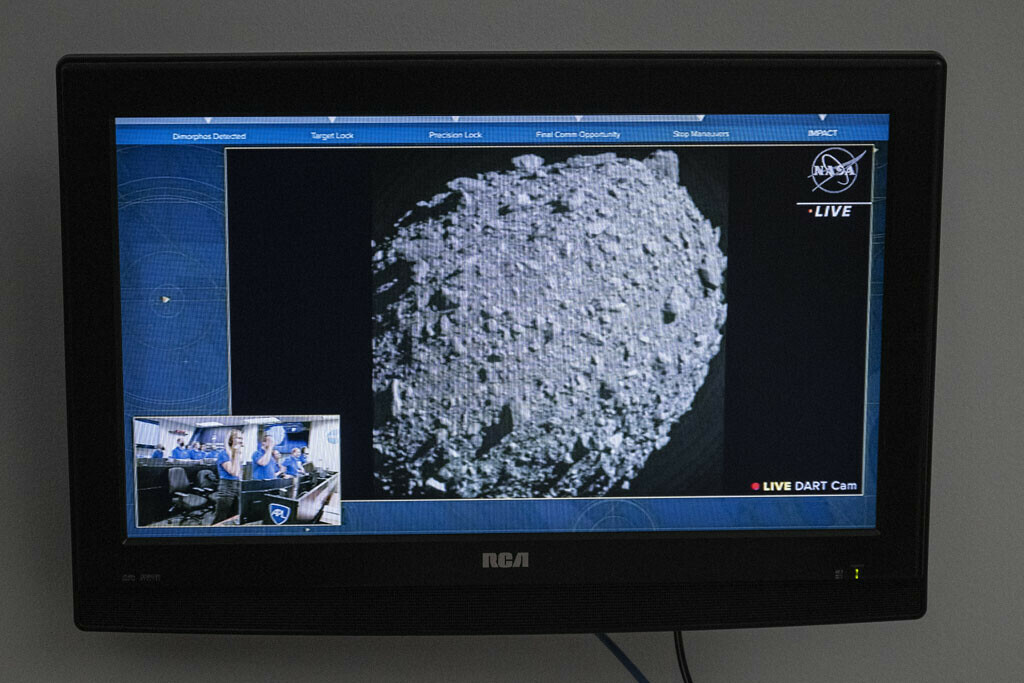In a historic test of humanity’s capacity to stop a celestial object from destroying life on Earth, a NASA spaceship successfully struck an asteroid seven million miles away on Monday in order to alter its orbit.
At 7:14 pm Eastern Time (23:14 GMT), 10 months after it launched from California on its ground-breaking mission, the Double Asteroid Redirection Test (DART) impactor successfully collided with its target, the space rock Dimorphos.
Director of NASA’s planetary science division, Lori Glaze, declared, “We’re entering a new age, one in which we might be able to defend ourselves from something like a dangerous, catastrophic asteroid impact.”
Dimorphos, a 530-foot (160-meter) asteroid with dimensions nearly equivalent to those of an Egyptian pyramid, orbits Didymos, its half-mile-long big brother.
The “moonlet,” which had never been seen before, first appeared as a speck of light around one hour before the collision.
In the last five minutes, as DART sped toward it at about 14,500 miles (23,500 kilometres) per hour, its egg-like form and rugged, boulder-dotted surface finally came into clear view.
The screen froze on a final image, indicating that signal had been lost and impact had occurred, and NASA scientists and engineers burst into celebration.
The two asteroids, which round the Sun every two years, are undoubtedly not a threat to our planet.
However, NASA has decided that it is crucial to conduct the experiment even in the absence of a clear need.
NASA intends to reduce Dimorphos’ orbit by striking it directly, cutting the time it now takes to encircle Didymos—11 hours and 55 minutes—by 10 minutes.
In the upcoming days and weeks, a precise orbital period should be available from ground telescopes, which are unable to directly observe the asteroid system but can identify changes in light patterning emanating from it.
Mahnur is MS(development Studies)Student at NUST University, completed BS Hons in Eng Literature. Content Writer, Policy analyst, Climate Change specialist, Teacher, HR Recruiter.










